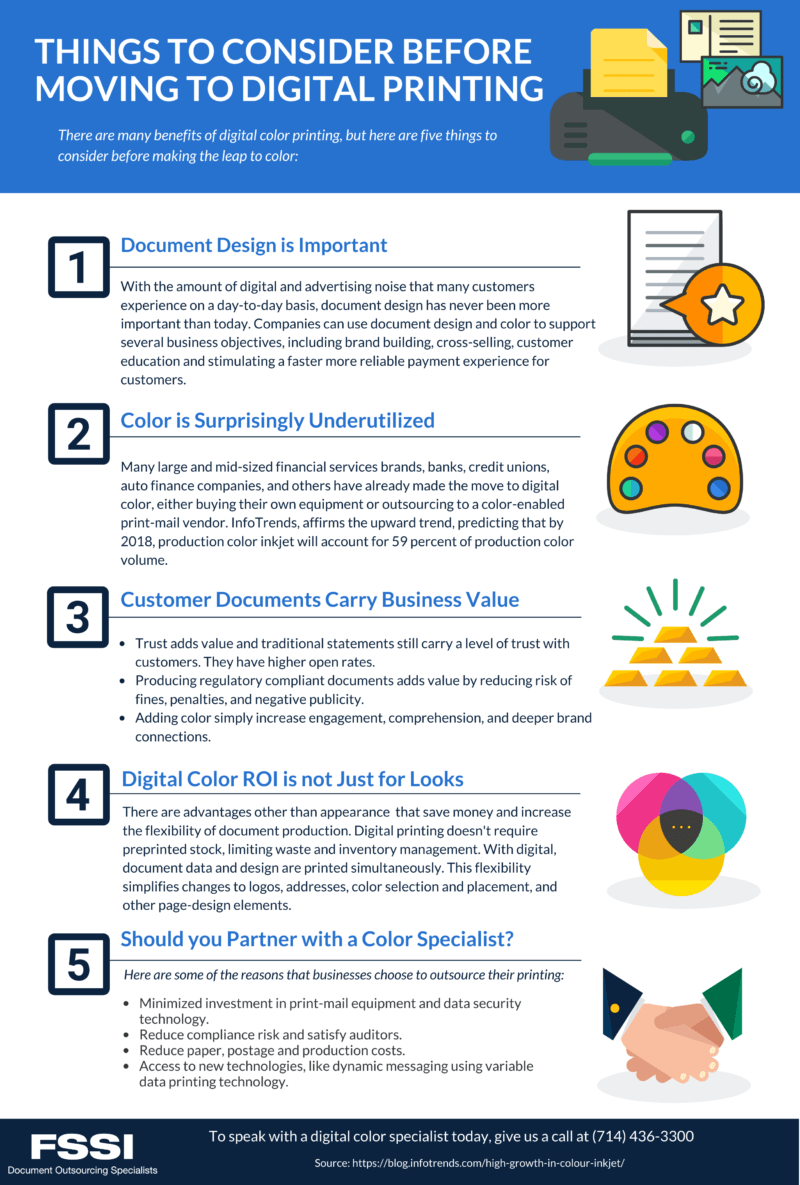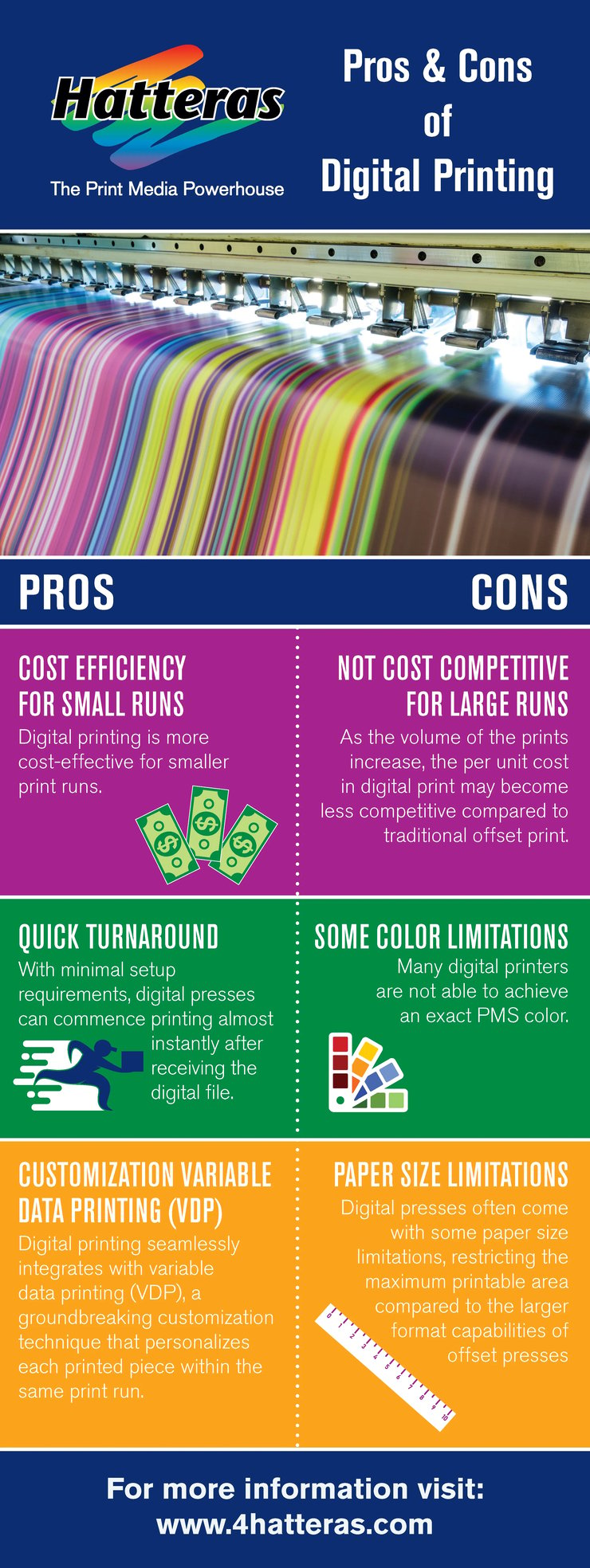A Biased View of Digital Printing
A Biased View of Digital Printing
Blog Article
The 5-Second Trick For Digital Printing
Table of ContentsThe 9-Second Trick For Digital PrintingWhat Does Digital Printing Do?The Ultimate Guide To Digital PrintingAll about Digital PrintingThe Best Guide To Digital PrintingThe 45-Second Trick For Digital Printing
Variable information printing, such as direct mail with customized codes and addresses, is preferably suited for electronic printing. Digital fast printing only requires 4 steps of design, testimonial, printing and binding to get whatever done. Digital fast printing has an unrivaled benefit: print on need.According to PMMI, electronic printing allows brands and makers to react promptly to customer demands while improving the supply chain, minimizing warehousing expense and waste, and enjoying faster time to market. That all sounds terrific, however just how does this modern technology do all that? The significant differentiator of these modern technologies is that there are no set up costs and no plates with electronic printing.
Digital Printing Fundamentals Explained
According to Wikipedia, the best distinction between electronic printing and traditional methods such as lithography, flexography, gravure, or letterpress - Digital Printing is that there is no demand to change printing plates in digital printing, whereas in these analog printing methods home plates are repetitively changed. This results in quicker turn-around time and reduces expense when using electronic printing.
Rapid manufacturing indicates getting your item to market faster. It additionally indicates it's easier and faster to make changes later on, when you change a recipe, include a SKU, or produce seasonal packaging. Digital printing is very versatile, so it's easy to make adjustments to the bundle design swiftly. It all returns to the plates.
With standard printing methods, short-run printing is just not feasible. Because an excellent design can make or break your product, electronic printing consistently creates high-grade, clear and colorful graphics each time.
Digital printing is the process of printing digital-based pictures straight onto a selection of media substrates. There is no need for a printing plate, unlike with offset printing. Digital data such as PDFs or desktop computer posting documents can be sent out directly to the digital printing press to print on paper, picture paper, canvas, textile, synthetics, cardstock and various other substratums.
Some Known Questions About Digital Printing.
According to PMMI, electronic printing enables brands and producers to respond rapidly to client demands while improving the supply try here chain, reducing warehousing price and waste, and delighting in faster time to market. That all sounds great, but just how does this innovation do all that? The major differentiator of these technologies is that there are no set up charges and no plates with electronic printing.
According to Wikipedia, the best difference between electronic printing and typical methods such as lithography, flexography, gravure, or letterpress is that there is no demand to change printing plates in electronic printing, whereas in these analog printing approaches home plates are repetitively changed. This leads to quicker turn-around time and lowers cost when making use of digital printing.

The Best Guide To Digital Printing
Extra stock can mean even more waste in the future. With traditional printing approaches, short-run printing is just not feasible. Because a great style can make or damage your product, electronic printing consistently produces high-grade, clear and vibrant graphics each time. Digital printing on flexible bags adds the brilliant, lively, and accurate graphics that virtually bid consumers to connect and touch them.

According to PMMI, digital printing allows brand names and suppliers to respond swiftly to customer needs while improving the supply chain, reducing warehousing click to find out more expense and waste, and enjoying faster time to market. That all noises great, however just how does their website this innovation do all that? The significant differentiator of these technologies is that there are no set-up charges and no plates with electronic printing.
Little Known Facts About Digital Printing.
This results in quicker turn-around time and decreases expense when using digital printing.
Digital printing is highly flexible, so it's very easy to make modifications to the package layout promptly. It all goes back to the plates.

Digital Printing Fundamentals Explained
Digital printing is the process of printing digital-based photos directly onto a selection of media substrates. There is no demand for a printing plate, unlike with offset printing. Digital documents such as PDFs or desktop computer posting files can be sent out directly to the digital printing press to print theoretically, picture paper, canvas, textile, synthetics, cardstock and other substratums.
Report this page